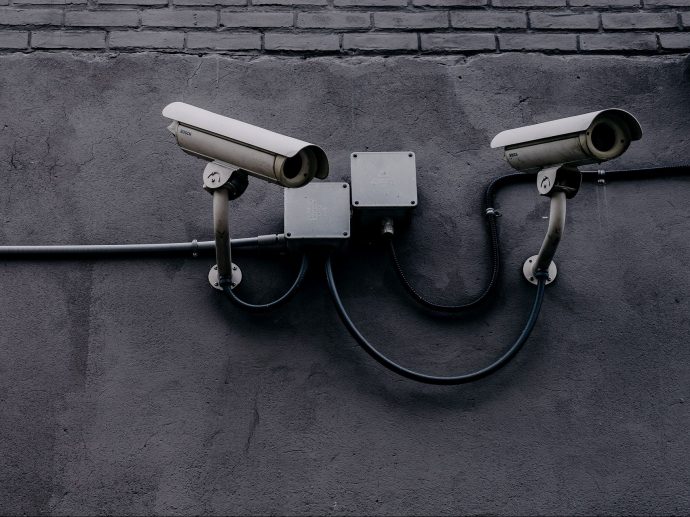Categories more
- Adventures (16)
- Arts / Collectables (14)
- Automotive (36)
- Aviation (10)
- Bath, Body, & Health (73)
- Children (6)
- Cigars / Spirits (30)
- Cuisine (16)
- Design/Architecture (17)
- Electronics (12)
- Entertainment (4)
- Event Planning (3)
- Fashion (43)
- Finance (8)
- Gifts / Misc (6)
- Home Decor (44)
- Jewelry (39)
- Pets (3)
- Philanthropy (1)
- Real Estate (11)
- Services (21)
- Sports / Golf (14)
- Vacation / Travel (60)
- Watches / Pens (14)
- Wines / Vines (24)
- Yachting / Boating (15)
7 Security Protocols for Public Spaces
Published
09/30/2024Security protocols are vital for safety in busy public areas. These plans stop threats, handle emergencies, and ensure everyone feels secure.
Security systems are vital in maintaining order where crowds gather. Gadgets like surveillance cameras with AI sensors, access control, and facial recognition help spot dangers before they escalate. With technology constantly improving, upgrading security to tackle new issues is crucial.
Here are the security protocols for public spaces:
Perimeter Control
Perimeter control limits movement to the outer limits of a property or event. The most common form of control is a physical barrier, such as a fence or gate. It serves as the first layer of security in public spaces. Surveillance cameras and motion sensors are often placed around these boundaries to monitor suspicious activity.
These AI threat detection systems can work with alarms to alert security staff if breaches occur. Cameras with AI add automation and advanced analysis to these systems. Unlike regular cameras that only record, AI can detect unusual things, like someone loitering by a fence or climbing over it, even in low light or bad weather, and send out an alert.
Access Control
Access control is a common security measure to protect public spaces like stadiums or government buildings. Like perimeter control, these systems might use physical barriers such as gates and fences. Typically, they include security staff who check credentials and technology like ID cards or biometric scanners.
AI weapons detection is becoming important to access control, helping keep people safe in public areas. As you might guess, these systems use advanced technology to scan for guns, knives, or other weapons when people enter buildings or crowded spots. They can spot threats quickly and alert security.
Facial Recognition
Many of us know how facial recognition unlocks our cell phones. This technology can also help monitor public spaces for safety. It identifies people based on their facial features. Cameras set up in public places capture images of people as they move around.
The system then analyzes these images just like our phones do. The data is checked against a pre-existing database of known individuals. If a match is found, security personnel are alerted to take action.
Behavioral Analytics
Modern surveillance systems now include AI analytics. These systems notice patterns and identify usual behaviours in the area they monitor. They offer real-time monitoring and alerts. When they spot something suspicious, they alert security staff immediately.
Using machine learning, the system determines what normal behaviour looks like in a place, like typical crowd flow in a mall or regular foot traffic in a subway. Once it knows this, the system monitors new data to see if anyone's acting out of the ordinary.
Drone Surveillance
Drone surveillance is an increasingly popular method of creating safer public spaces. Equipped with high-resolution cameras, thermal imaging, and AI technology like facial recognition, they capture detailed images and videos of their surroundings. Drones can cover vast areas quickly, providing real-time data to security teams and allowing immediate response to detected threats.
Crowd Management Strategies
A key part of planning large events in public places is managing how people move and ensuring they can do so safely. Before the event, organizers must plan thoroughly, paying attention to every detail to prevent problems. This involves considering risks like overcrowding and blocked exits and ensuring clear evacuation paths.
It's important to have plans for medical help in case something happens. Organizations can create plans that reduce risks by studying the crowd and the event area. This kind of preparation helps prevent accidents and ensures everyone can enjoy the event in a safe and well-managed environment.
Communication Protocols
Clear communication steps are crucial for public safety in shared spaces. These steps ensure that important information reaches the public and staff quickly and clearly. Places and events often use tools like PA systems, digital signs, or mobile alerts to let people know about safety rules, evacuation paths, or incidents happening at the time.
Well-planned communication reduces confusion and panic, helping people follow directions and stay safe. It's also important for all event staff to be trained on these procedures so that they can respond well and keep everyone informed during emergencies.















